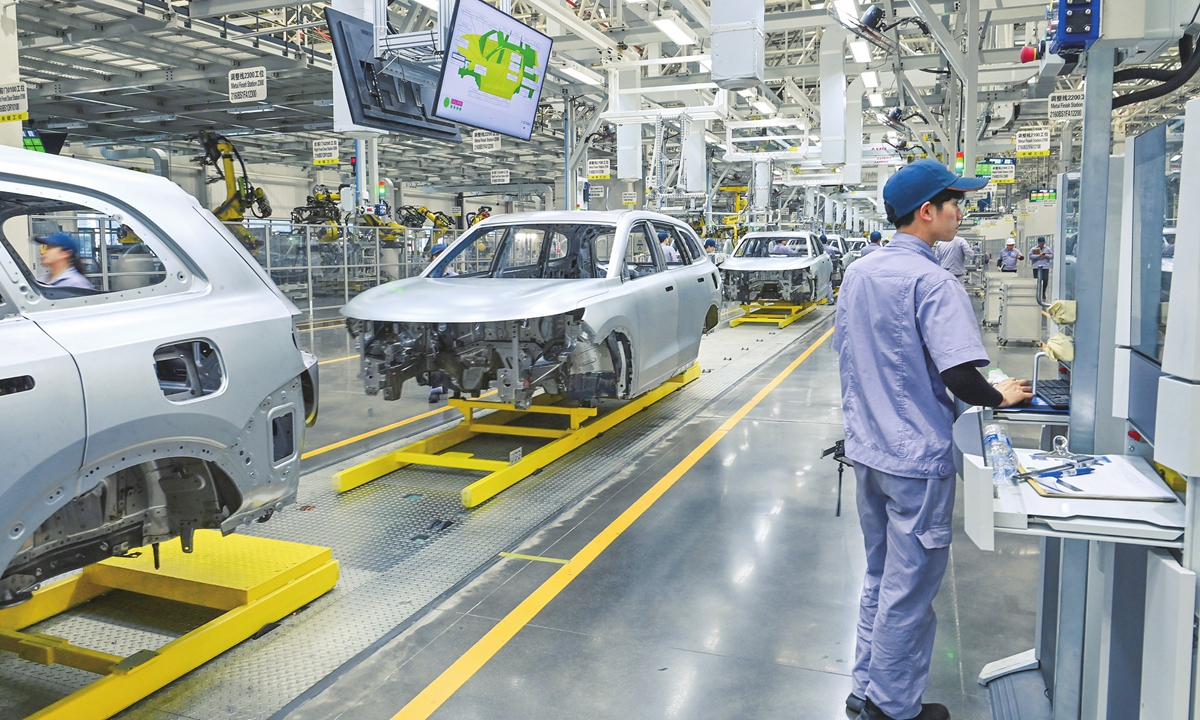Key takeaways
The necessity of semiconductor production as the cornerstone of contemporary electronic gadgets, its economic relevance in terms of revenue generation and employment creation, and its influence on creativity across several industries are among the most important lessons to be learned from the conversation on semiconductor manufacturing in the tech sector. The difficulties the US semiconductor industry faces—such as its reliance on overseas production and its workforce scarcity—highlight the necessity for calculated solutions in order to maintain growth and competitiveness. The Inflation Reduction Act’s contribution to semiconductor manufacture through financing for research and development and incentives highlights a dedication to reviving local production and ensuring the industry’s long-term viability. Furthermore, the technical developments that are fueling the rebirth of chips, such AI integration, improved materials, and nanotechnology, have the potential to completely semiconductor manufacturing and drive progress in key sectors like healthcare, transportation, and communication.

It is clear from studying semiconductor production that the tech sector is highly dependent on the complex procedures needed to produce these vital parts. Semiconductor chips are the hidden heroes that fuel our contemporary electronic gadgets and allow them to function at their peak efficiency, from vehicles to smartphones. It is impossible to overestimate the economic importance of semiconductor manufacturing since it not only fosters innovation but also generates income and jobs. Nonetheless, issues including a lack of trained workers and intense competition from across the world are impeding the industry’s expansion. Against this backdrop of difficulties, the Inflation Reduction Act stands out as a ray of hope, providing incentives and assistance to increase local semiconductor manufacturing. Technology is bringing about a chip renaissance, and we are on the brink of a new era in semiconductor manufacturing that promises exciting possibilities for the future.
The Significance of Semiconductor Manufacturing in the Tech Industry
Since semiconductors are the building blocks of contemporary electronic gadgets, semiconductor production is essential to the tech sector. Computers, cellphones, and even automobiles would not be able to operate as we do now without semiconductor chips. These chips are in charge of processing and storing data, which makes it possible for different electrical components to operate and perform. The tech sector mostly depends on semiconductor production to keep up with the increasing demand for cutting-edge and novel devices.
In addition to being essential to technical progress, semiconductor production has a major impact on the economy. The sector is a major source of income creation and offers a wide range of employment possibilities. Beyond its immediate economic impact, the production of semiconductors stimulates innovation and advances other industries. Semiconductor chips form the foundation of modern society’s technical infrastructure, driving the automobile sector, improving healthcare services, and altering telecommunications.
It is impossible to exaggerate the significance of semiconductor production to the IT sector. It acts as a stimulant for expansion and progress, driving innovations that influence the course of several industries. Semiconductor manufacturing is a vital sector of the global economy that promotes competitiveness, innovation, and the development of a more connected and efficient world. Its influence is global, affecting every facet of our existence and bringing us closer to a future characterized by cutting-edge technology and boundless opportunities.
Challenges Faced by the Semiconductor Industry in America
Many obstacles that the US semiconductor industry must overcome will affect its competitiveness and rate of expansion. The dependence on foreign manufacturing, especially in nations like China, is one of the main obstacles. There are hazards to both economic stability and national security associated with this reliance on outside suppliers for semiconductor manufacture. It also makes it more difficult to react rapidly to changes in the supply chain and market needs.
One major obstacle impeding the semiconductor industry’s capacity for innovation and expansion is the lack of trained personnel. Chip manufacturing is a complex process that requires a staff with specialized knowledge in areas like semiconductor design, production, and testing. However, the industry’s ability to fulfill the growing demand for cutting-edge technology solutions is hampered by the lack of competent personnel with the requisite knowledge and abilities.
In addition to impeding the industry’s potential to grow, this personnel scarcity slows down the rate of innovation. Insufficient people with experience in semiconductor technology might hinder firms’ ability to create and execute innovative solutions that propel advancements in the technology sector. Furthermore, a shortage of experienced labor might cause manufacturing to lag, which would make it more difficult to produce semiconductor components on time to fulfill market expectations.
Maintaining development and competitiveness in the semiconductor sector requires addressing the skilled labor shortage. To close the knowledge gap, funding for educational and training initiatives aimed at producing a new generation of semiconductor specialists is crucial. This obstacle may be addressed and the industry’s full potential for innovation and growth unlocked by developing a knowledgeable and talented workforce.
The semiconductor business also has to contend with fierce international rivalry. Due to large investments made in semiconductor production, nations like South Korea, Taiwan, and Japan have created a competitive environment. America needs to solve these issues and grow its own semiconductor sector if it wants to stay at the forefront.
The Role of the Inflation Reduction Act in Boosting Semiconductor Manufacturing
The Inflation Reduction Act is a major driving force behind the start of a new era in American semiconductor manufacture. This legislation aims to increase local semiconductor chip manufacturing through various incentives and support systems, therefore decreasing reliance on foreign suppliers and strengthening national security protocols. The Act seeks to create a more robust and independent manufacturing environment in addition to promoting growth in the semiconductor sector via targeted investments and activities.
The Inflation Reduction Act includes funding for semiconductor technology research and development as one of its main features. These resources play a crucial role in propelling the development of state-of-the-art semiconductor solutions by promoting innovation and improvements in chip design and fabrication. In order to encourage semiconductor businesses to develop or expand their production facilities within the United States, the Act also offers grants and financial incentives to them. In addition to reducing manufacturing costs, this tactical move gives US semiconductor makers a stronger worldwide competitive advantage.
Essentially, via encouraging local development, innovation, and strengthening the industry’s standing in the global marketplace, the Inflation Reduction Act is a major factor in reviving semiconductor production in America. Its all-encompassing framework demonstrates a dedication to fortifying the basis of semiconductor manufacturing in the nation and guaranteeing a stable, sustainable future for this vital industry.
The Inflation Reduction Act includes funding for semiconductor technology research and development as one of its main features. By encouraging creativity and technical progress, this funding makes it possible to create innovative chips. Additionally, it is in favor of the growth of semiconductor manufacturing facilities and the generation of employment within the sector.
To further encourage semiconductor businesses to start or grow their manufacturing operations in the United States, the Inflation Reduction Act provides grants and tax benefits. By lowering production costs, these incentives boost a company’s competitiveness on the international market.
All things considered, the Inflation Reduction Act is crucial in stimulating the semiconductor industry’s development, innovation, and standing in the international marketplace.
Technological Advancements Driving the Chip Renaissance
A chip renaissance is being propelled by technological developments that are transforming semiconductor production and opening up new avenues of opportunity. The creation of more compact and effective chip designs using techniques like nanotechnology is one of the major breakthroughs. As a result, chips with improved performance and reduced power consumption may be produced.
The use of cutting-edge materials in chip production is another important development. Because of their superior electrical qualities, materials like silicon carbide (SiC) and gallium nitride (GaN) may be used to create chips with higher power and frequency capabilities.
Furthermore, the industry has undergone a revolution because to the incorporation of machine learning (ML) and artificial intelligence (AI) in chip design and manufacture. These technologies facilitate the creation of intelligent and autonomous devices, enhance manufacturing procedures, and maximize chip performance.
These technical developments are predicted to trigger a chip renaissance that will have a significant influence on a number of industries, including healthcare, transportation, and communication. It improves the capability of electrical gadgets and creates new avenues for innovation.
Future Prospects for Semiconductor Manufacturing in America
Thanks to programs like the Inflation Reduction Act and the rising demand for cutting-edge electronic products, semiconductor manufacturing in the United States has bright future prospects.
Innovation and major technical improvements are expected in the business with more funding going into research and development. The development of more sophisticated and effective semiconductors as a result will propel the IT sector’s expansion even further.
Focusing on homegrown semiconductor production will also improve the supply chain and lessen reliance on outside resources. In addition to improving national security, this will guarantee a more robust and stable semiconductor sector.
Furthermore, American semiconductor production has more promising futures than just conventional consumer electronics. For semiconductor firms, the emergence of new technologies like 5G, the Internet of Things (IoT), and autonomous cars offers new prospects. Because these technologies need for specific chips and parts, there is a need for advanced manufacturing skills.
In conclusion, with robust government backing, rapid technical development, and expanding demand, the future of semiconductor production in America is bright. The sector is set up for expansion and innovation, opening the door to a new age in chip manufacturing and propelling the rise of the IT sector overall.
In summary, the American semiconductor sector faces several obstacles, including a lack of trained personnel and a reliance on overseas manufacture. However, there is optimism for a revival of local semiconductor manufacture thanks to programs like the Inflation Reduction Act. This law promotes businesses to locate or grow their manufacturing plants in the United States in addition to offering incentives for research and development. Advanced materials and nanotechnology are two technical developments propelling the chip renaissance that are changing the market and creating new opportunities. The future looks promising for semiconductor production in the United States because to increased market demand, government assistance, and an emphasis on innovation. The sector is set to expand, generating technological breakthroughs and catapulting the IT sector into a new era defined by cutting-edge solutions and limitless potential.
FAQ
Which of these is the new trend in semiconductor chip manufacturing?
The integration of machine learning (ML) and artificial intelligence (AI) into the design and production processes is the latest trend in semiconductor chip manufacturing. These cutting-edge technologies facilitate the development of intelligent and autonomous devices, improve chip performance, and reduce manufacturing procedures. Through the utilization of AI and ML, semiconductor producers may expand their creative horizons and produce chips that are increasingly advanced and productive. This trend ushers in a new era of intelligent and adaptable semiconductor solutions while also propelling industrial advancement.
What is the creating helpful incentives to produce semiconductors for America chips Act?
One important piece of legislation that aims to support domestic semiconductor manufacture in the United States is the “creating helpful incentives to produce semiconductors for America chips Act”. This Act gives semiconductor businesses the tools they need to grow or create production facilities in the nation by providing a variety of incentives and assistance. In addition to lowering manufacturing costs, this tactical move gives US semiconductor makers a stronger worldwide competitive advantage. By providing these incentives, the Act significantly contributes to the revival of semiconductor manufacturing in the United States, as well as to the country’s development, innovation, and sustainability.
How real is America’s chip making Renaissance?
The semiconductor industry in America Renaissance is a real and profound change in the semiconductor industry, not merely a passing fad. The revival of semiconductor production in the US is a genuine and optimistic phenomenon, thanks to smart government assistance, technical developments, and rising market demand. Policies such as the Inflation Reduction Act are supporting national security efforts, encouraging innovation, and opening the door for a resurgent domestic semiconductor sector. The industry is changing, progressing, and opening up new opportunities as a result of the incorporation of cutting-edge technologies like AI and ML into chip design and production processes. With a strong emphasis on innovation and rising market demand, semiconductor manufacturing in America has promising future possibilities as it enters a new age characterized by cutting-edge solutions and limitless potential. America’s chip-making Renaissance is not just a concept, but a reality that is shaping the future of the tech industry.
How does the recession affect the semiconductor industry?
Due to potential declines in consumer spending, a decline in the market for electronic products, and supply chain disruptions across international borders, the recession may have a substantial effect on the semiconductor sector. Companies may reduce their R&D spending during recessions, which might impede innovation and technical developments in the chip manufacturing industry. Furthermore, layoffs and lower funding during a recession might hinder semiconductor businesses’ capacity to make investments in new technologies and adjust to shifting market conditions.
Furthermore, as variations in price and demand may have an effect on semiconductor makers’ bottom line, the ambiguity and volatility brought on by a recession may provide difficulties for them. This may result in lower output, postponed projects, and slower growth in the sector. A recession may also impact the finance available for new enterprises and startups in the semiconductor industry, which would restrict the sector’s overall development and competitiveness.
All things considered, the impact of a recession on the semiconductor sector emphasizes how critical it is to maintain economic stability and foster innovation and expansion. Policymakers and business leaders may assist lessen the effects of economic downturns on semiconductor manufacturing and guarantee a sustainable future for the sector by tackling these issues and fostering a resilient and innovative industry.
Hope the article was helpful for more check out our previous blog post by clicking here

